How to Build a Teacher and Chef Partnership
Chef James Martin and Pilot Light Educators Paul Floyd & Rita Leary on how teachers and chefs can connect to create meaningful Food Education experiences
Since 2013, Pilot Light has brought together teachers and chefs to create hands-on Food Education experiences for students in the classroom. What started as a partnership between Founding Chefs Paul Kahan, Justin Large, Jason Hammel, and Matthias Merges and teachers at Disney II Magnet School in Chicago has grown into a national organization reaching nearly 25,000 students, over 275 educators, and 25 school districts through multiple programs.
Though Pilot Light’s model has evolved over the years, partnerships between teachers and chefs are still an important part of our mission. Chef perspectives offer students a new window into their local food system, and teachers see their students become more engaged and excited to learn. Today, we sat down with two Pilot Light teachers Rita Leary and Paul Floyd both of whom have partnered with Chef James Martin (Founder & Chef of Chicago’s Bocadillo Market) to discuss how their partnership benefited their students, classrooms, and themselves.
Thank you all for joining us! As you all know, a teacher/chef partnership is a key component of our annual Food Education Fellowship. I’d love to start by hearing from our Fellow alums about how their chef partnerships came to be.
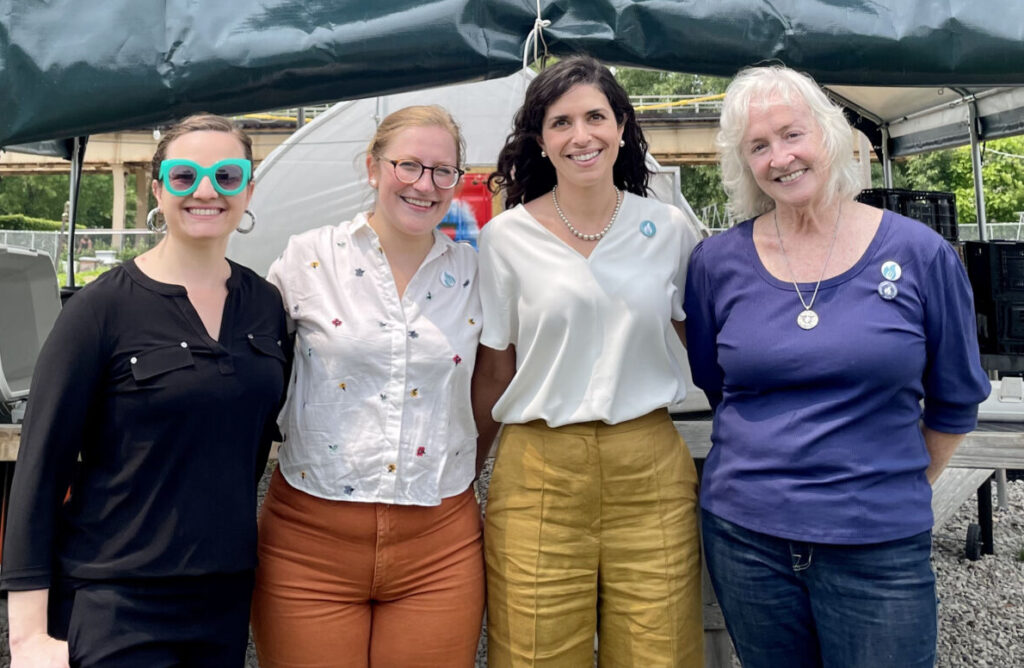
Teacher Rita Leary (RL): My partnership with Chef James was something I started working on right at the beginning of my Fellowship year. Building our community partnerships was something that my school was really invested in at that time. Additionally, there was great interest from my students. However, the actual chef classroom visit ended up happening later in the year. This actually worked out really well, because the lesson was able to highlight all of the Food Education Standards that we had been learning about over the course of the year. It was really a beautiful culminating event.
A Pandemic Pivot
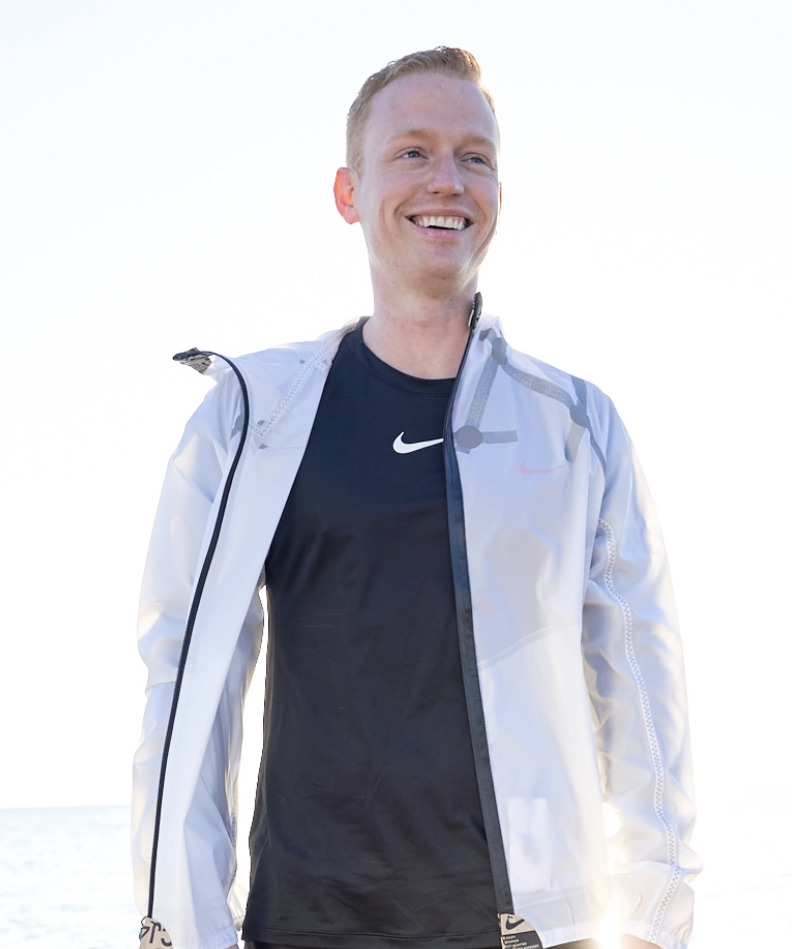
Teacher Paul Floyd (PF): I was actually approached by [Food Education Fellowship Director] Caitlin Arens to have a chef partnership in our classroom. My Fellowship year unfortunately happened during the COVID lockdown era, so Pilot Light was looking for creative ways to engage students, teachers, and chefs. We met with Chef James and had a meaningful discussion about what we wanted to do. Together, we decided to make a apple pancakes with a large group of 4th-6th graders over Zoom in a live cooking event.
Core Memories
What was really special about partnership with Chef James was that it gave us the opportunity to discuss entrepreneurship. At the time, Chef James was going through the process of opening Bocadillo Market, so it was great to have an example of an entrepreneur in my students’ community. He showed them what that process can look like, and brought a lot of information about the business side of the culinary world.
During the cooking demo, we distributed the ingredients for the apple pancakes to students so they cooked along with us. For weeks after, students were asking me follow-up questions: “When is James coming back?” “When can we cook again?” It became one of those core memories.
Chef James, I’d love to hear about how the teacher/chef partnership came about for you, and why you wanted to get involved in the classroom.
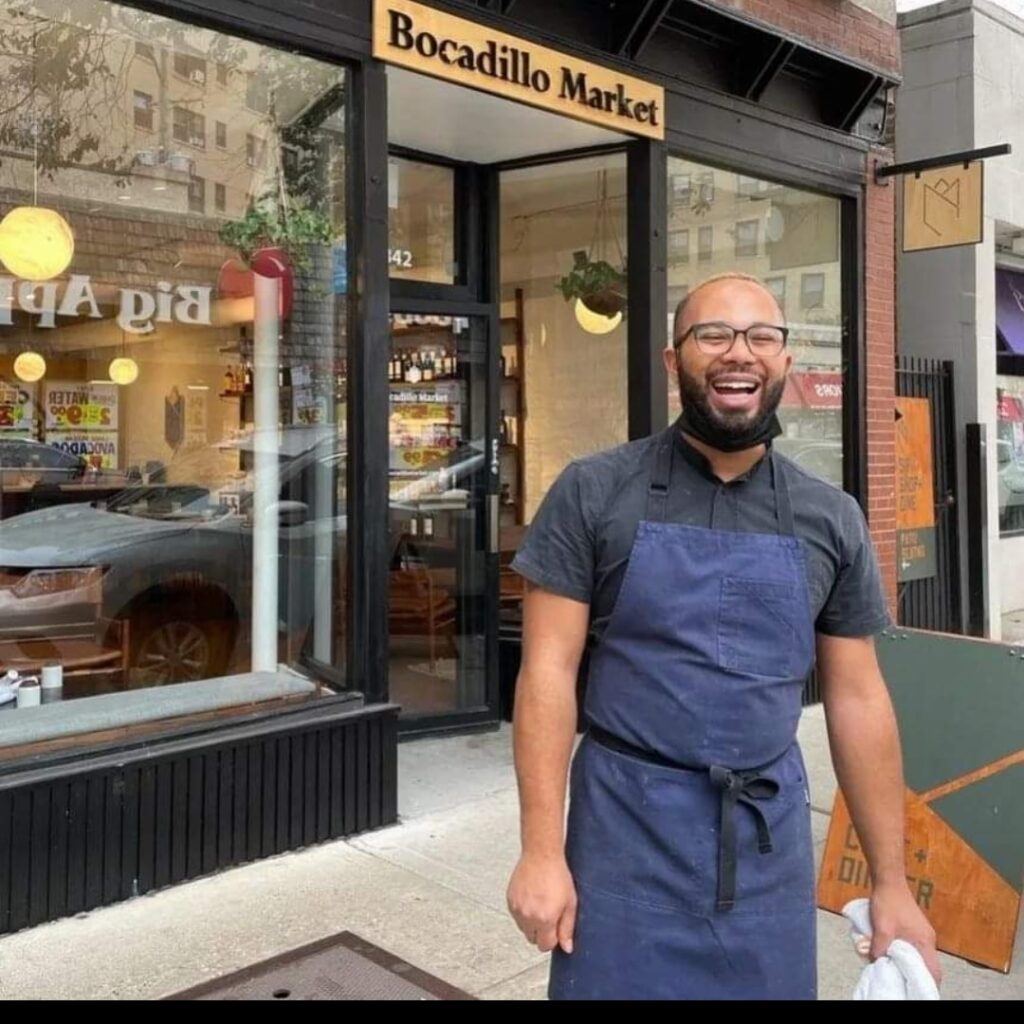
Chef James Martin (CJM): Pilot Light made it easy for me to get involved. I had worked with [Founding Chefs] Matthias Merges and Jason Hammel in the past, and I was already connected with Caitlin. She’s definitely one of the biggest connectors that I’ve worked with. Once she introduced me to Paul and Rita, I saw their passion for their students and for education.
That passion allowed us to connect through food and help the students understand the power that food has in their lives. That includes the physical education, nutritional information, or the history behind the foods we’re talking about. All of those things were entry points that allowed Paul, Rita, and I to connect.
I think Pilot Light is such an amazing platform for chefs and teachers to connect food and academics. It makes the classroom really fun. Teaching the future about food’s role in our world is a big passion of mine.
Making it Easy
PF: I want to say something else about Caitlin. When I came in to that initial meeting, before I could contribute anything, Chef James had already created a PowerPoint. Caitlin had already created a grocery list and had worked out the logistics of dropping off the food. The structure of the Food Education Fellowship and the chefs that partner with them create an easy on-ramp for teachers to do these kinds of partnerships. They make it a really enjoyable experience to be a part of from the teacher side of things.
A Perfect Recipe
RL: When Chef James and I started talking, we wanted to meet the students where they were in the curriculum. In my social studies class, we were discussing cultural exchange along the Silk Road and then into West Africa and the trade routes for gold and salt. Chef James was able to take that to the next level by looking at food as a vehicle for cultural exchange. He took what my students had already learned about over the course of the year and brought it together in a sensory experience.
His visit brought those concepts home for the students. It was like this perfect recipe that I thought would be really hard to figure out, but became a natural extension of my curriculum.
WATCH Chef James Martin Visit Rita Leary’s Classroom!
Classroom Connection
CJM: I think Pilot Light is such a great community builder. As chefs, it allows us to connect with people that we may not see day-to-day. That includes teachers, students, and other faculty members, even other chefs and cooks in our community and the Pilot Light team themselves. It allows us to get out of our normal routine in our restaurants. With Pilot Light, I can get out of the kitchen for a little bit and connect with teachers like Paul and Rita and use our combined skill sets to create something new in the classroom and show students how food impacts the world.
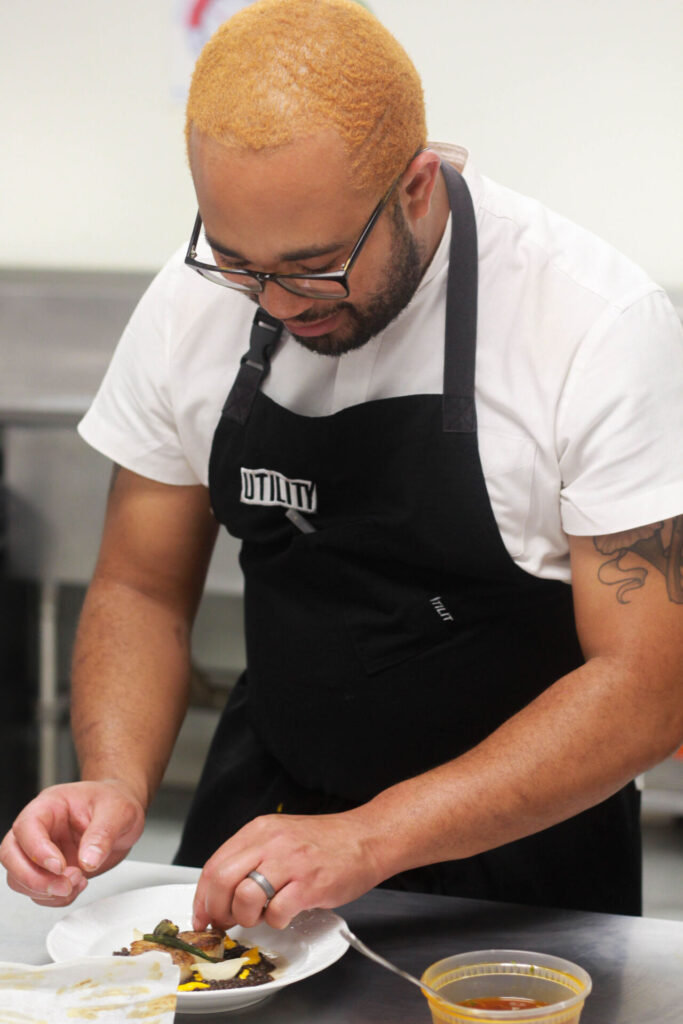
RL: It was remarkable to my students that a professional would take time out of their business and come to our school. It made a big impression on them. “Wow, he’s coming here?!” It made them feel very significant.
PF: When Chef James comes in to the classroom, he brings with him a depth of knowledge about food that we as teachers don’t necessarily have. Then, from the teaching side, we know about the pacing of a lesson and classroom management. It allows our unique set of skills to come together.
What was collaboration like for all of you during the planning phase?
PF: We started with the food. Because we were doing a cooking experience, we figured out what would be easy for students to make and built from there. My lesson had some more flexibility during our planning process due to the chaos of the pandemic. We wanted to give students something meaningful that they could enjoy and relate to. Then, James came in with his PowerPoint ready to go, and we were organically ready for the live virtual lesson.
Connecting Through Food
CJM: Paul and I had talked over the phone and email before the lesson, but the cooking demo was the first time we met in person. When we filmed in the common area kitchen of his building, and we connected really quickly. I think we share some of the same bonds: helping the community and making the world a better place through education and food. I love making sure the youth, the future, knows more about the world around them.
To me, food is business. It’s history. It’s creating recipes, so it’s also math: you have the academic side of things. I also think it’s important to show students that it’s been done before and what’s possible for them. In Paul’s case, we were on Zoom, so we were showing them that we still can have connection with people even in lockdown. We were able to come together to do something that everyone loves: no matter what culture you come from, everyone loves pancakes! Everyone loves apples!
We also talked about the nutritional value of what we were cooking. Additionally, we talked about all the varieties of apples and how some don’t even make it to the store. Kids love learning those facts and little details that go into their food. All of it is impactful.
A Lesson in Entrepreneurship
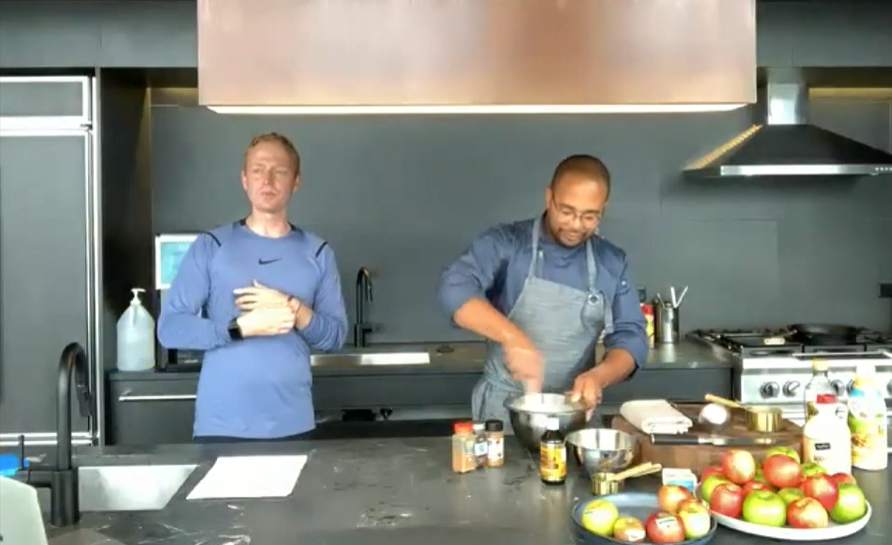
PF: I think Chef James brought like, thirteen types of apples. He had labels for them all, it was incredible. We also talked about his entrepreneurial experiences. Having that example was a really important piece for my students. I think those conversations were even bigger than food, bigger than the classroom.
One of my students at that time was interested in opening a restaurant as a career path. She lives in a community where there aren’t a ton of entrepreneurs, so seeing Chef James’ example, even as a ten year old, helped her understand that process more.
Different Ways of Learning
CJM: It’s nice to see teachers like Paul and Rita who want to make those connections outside of the day-to-day classroom because kids learn in different ways. For me, I grew up learning by watching my parents and the other people around me. My mom taught me how to write checks at a young age — it’s the little things. A lot of people don’t get those hands-on experiences.
Working with educators like Rita and Paul, I see kids learning more of those life skills. They learn how to connect what they learn in the classroom to the bigger world around them.
Apples & Oranges
RL: Your visit opened up so many doors of inquiry. It’s funny, your lesson with Paul was apples and the lesson in my class included oranges: we’re talking apples & oranges today! Chef James brought in all these varieties of oranges and students’ eyes were opened just to the simple fact that all these varieties exist. Then, you broke down the [Spanish spice blend] Andalusian spice components. Students were like, “Oh, this is like seasoning salt.” Then, we were able to research and break down what’s in the seasoning salt they’re used to buying at the grocery store.
Doors of Inquiry
There was all this inquiry that came out of that one experience, including looking for recipes that use oranges. When it started to get warm, students researched how to make their own orange julius. I have a student who is vegan, who previously got teased for it. He found vegan orange French Toast and was able to share that with us. Then, one of my aspiring chef students asked the vegan student if he could help plate the dish. He wanted to help make it look beautiful for everyone. They weren’t even really friends before that, but they shared that connection. It was a really beautiful experience that all stemmed from this chef partnership lesson.
How did you all see students responding to the chef lesson?
CJM: Seeing the kids engaged was really rewarding. Especially when you start the lesson, and you see some students off in the corner in their own. Then, they start to realize “Oh wow, this is actually really interesting.” In Rita’s class, we talked a lot about the cultural exchange between North Africa and Europe and how music, fashion, architecture, and food were all a part of that. With Paul’s students, we talked about seasonality and varieties of apples, nutritional values and flavor profiles. It was very interactive.
For me, it’s exciting to see because learning is different for every person. Food Education allows the students to learn in a different fashion. It gets me pumped up, too!
How a Lesson Grows
PF: Rita, your lesson sounds so interesting. I’m so curious about what you guys did!
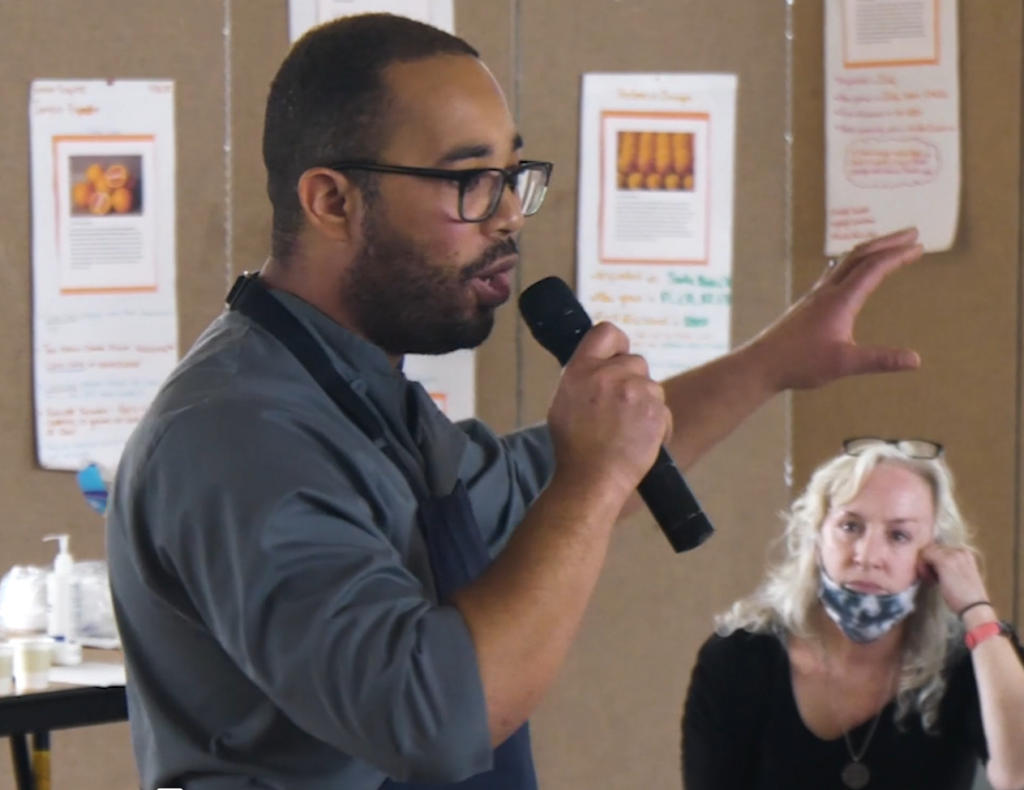
RL: Really, it was amazing because the students really ran with it. Chef James, you shared your story with my students. A lot of that story was about how your family and upbringing influenced your career as a chef and entrepreneur. We talked a lot about that as a class. After that, in every unit we studied afterwards, students were asking: “What could we prepare here?” “What would be an authentic recipe?”
I’m telling you, I had students that were like: “I’ll find the recipe!” “I’ll do the research!” “I’ll make the shopping list!” It became a thing of its own. It’s exciting because their learning became less on me. They’re the ones doing it for themselves. It started as that one chef visit and then it just blossomed.
What was personally and professionally rewarding for each of you about this experience?
Food as Identity
PF: The Food Education Fellowship is incredibly engaging. It facilitates conversations that are bigger than the classroom, bigger than food. As an educator, that’s what you’re always trying to get to.
I think a big part of the reason Food Education works is because food is so related to our identity as individuals. It allows students to relate on an identity level. Once those connections are made, it creates a strong and unique bond. Pilot Light’s unique quality is that it creates an opportunity for students to relate on that identity level, which then makes content easy to implement. It gives them a great opportunity to connect to each other and themselves.
Chef James and I have become friends after this experience — he was just at my wedding! Our friends and families have connected over the years as well. We have a great community of driven, supportive people from both the chef and teacher backgrounds.
A New Perspective
RL: After 30 years of being an educator, I started using Food Education in the classroom. It showed me the benefit in releasing control, and allowed my classroom to expand in ways that I couldn’t predict. It was a welcome and beautifully supportive outcome. I credit Pilot Light, Caitlin, and Chef James’ flexibility for making it a seamless of a process for me.
Personally, I learned to see my students through a new lens. Food Education helped me see their culture, their identity, their dreams, their adventurous side. To be willing to research foods and share things with their peers: it’s a vulnerability in a way. It’s been a really nice thing to see late in my career. I’ve learned a lot.
Building Community
CJM: Pilot Light is a community builder in a lot of ways. Not just connecting classrooms, but connecting the city of Chicago. Or, wherever their teachers are! Pilot Light is definitely growing, so I can’t just say Chicago anymore!
Paul, Rita, and I all live in and represent different neighborhoods, but we’re really close. Sometimes, Chicago can feel very spread out. Like you’re a country away from your neighbors. But I think Pilot Light connects that community. It connects brilliant people together to foster relationships through food and education. This opportunity allows us to make the world a better place through the youth!
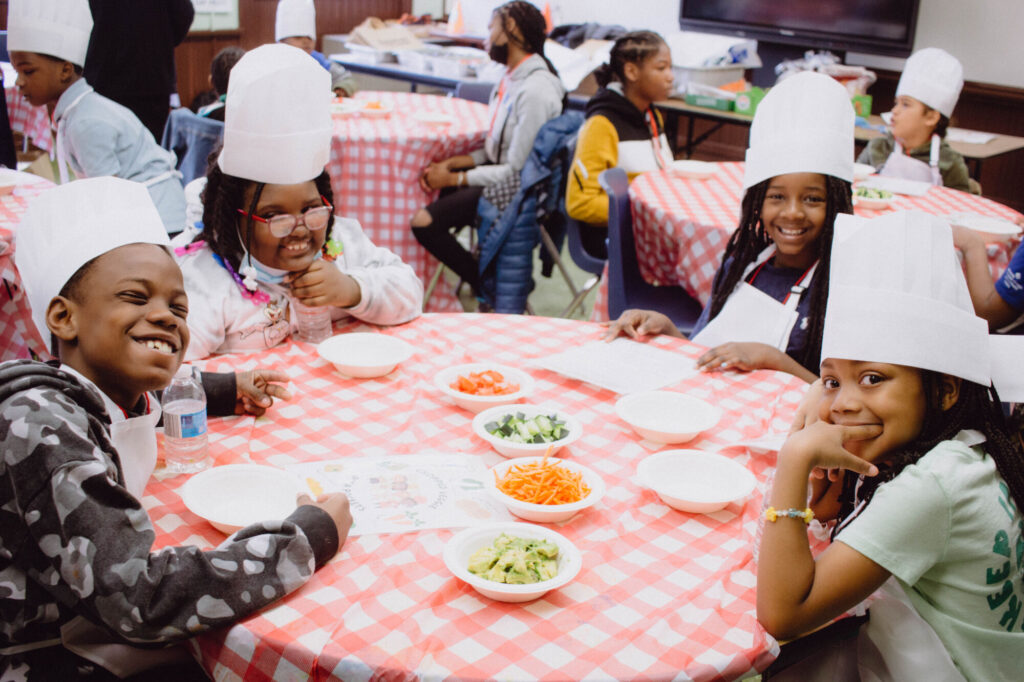
At the end of the day, we have to teach them that education is the key. I think showing the youth that adults are excited about education and are able to make it fun is really important. I’m sure Paul and Rita are tough in school when they need to be, but they make it fun when I come around! Pilot Light allows education to become a more interactive.
Can you share a piece of advice with teachers and chefs who are interested in building a partnership?
Know Your Strengths
PF: I was very lucky to have Caitlin and James as my partners in this. Like I said before, they had most of the project ready by the time I came on. I worked to figure out where I could contribute. I think knowing what your strengths are, what you can give, and making sure you have clear communication within your partnership are all key.
Go For It
RL: All I can say is: “Go for it!” If nothing else, remember Food Education Standard #1: Foods connects us. Just start there. Everything that will blossom out of it will take you the rest of the way. If you start to overthink, it will seem daunting. You just have to go for it. Collaborate, take baby steps if you need to. I think Paul’s lesson with cooking sounds great for virtual learning. For us, we had just come back to in person learning, so coming together as a whole middle school for Chef James’ presentation was a great way to connect. Whatever shape it takes, go for it.
Share Your Story
CJM: For future chefs, I would say don’t hold back. Have fun with the students and don’t be afraid to share your story. I shared my story: my love for food, my love for education, and how much I’ve learned about myself through my passions. Making it inspiring so that students have something to look up to. Show that as long as they put the work in, they can do whatever they put their mind to.



